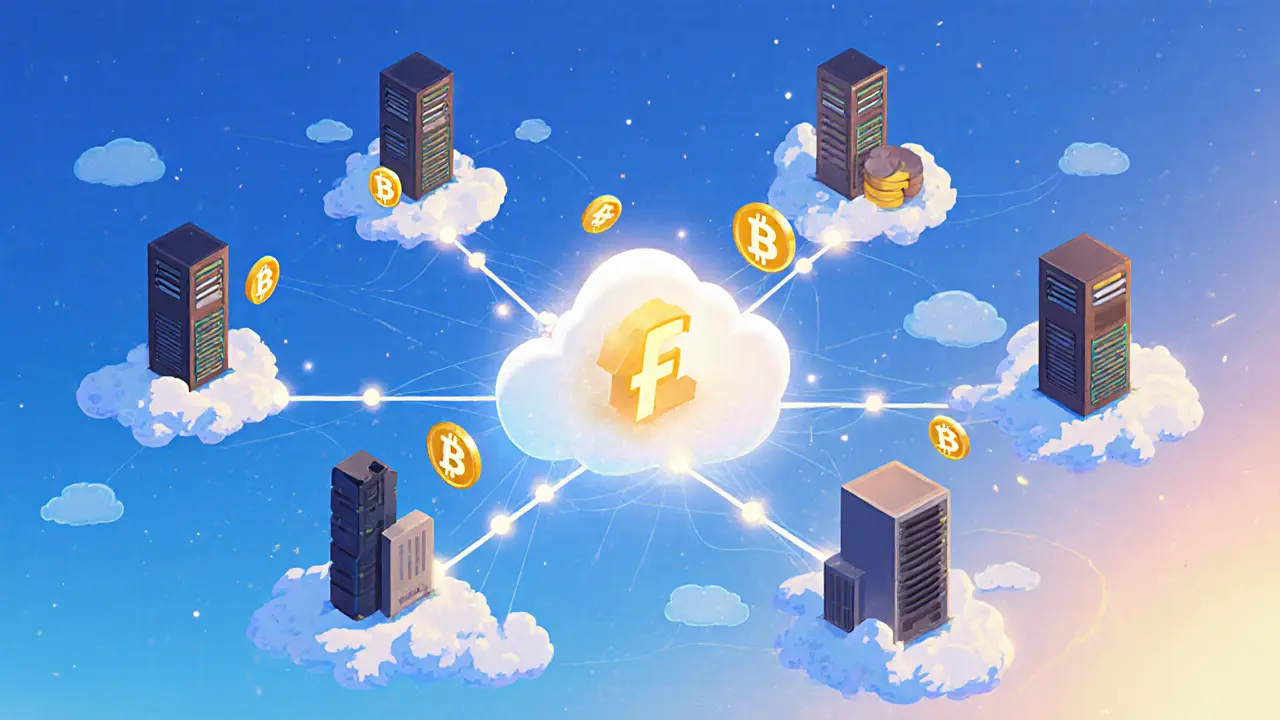A clear, easy‑to‑read guide that explains what Flux (FLX) crypto coin is, how its token works, key ecosystem components, and how to get started.
Decentralized Cloud: The Future of Distributed Computing
When working with decentralized cloud, a network of independent nodes that deliver compute, storage and networking services without a single controlling authority, you are stepping into a model that blends the resilience of peer‑to‑peer networks with the flexibility of traditional cloud platforms. Also known as distributed cloud, it enables developers to run applications closer to users, reduce latency, and avoid vendor lock‑in. The core engine behind this shift is blockchain, a decentralized ledger that records every transaction across a sprawling set of computers. By anchoring resource allocation and payment flows to immutable smart contracts, blockchain guarantees that no single party can rewrite usage records or fees. At the same time, decentralized storage, file systems like IPFS or Filecoin that spread data across many nodes ensures that files stay online even if individual servers go down. Together these pieces create a trustworthy, censorship‑resistant stack that powers the next wave of Web3 services.
The decentralized cloud isn’t just a buzzword; it solves real technical problems. One semantic triple here is: "decentralized cloud leverages blockchain for trustless settlement." Another is: "decentralized storage provides redundancy and data availability for cloud workloads." Finally, "edge computing enhances user experience by processing data near the source." Speaking of edge, edge computing, the practice of running compute tasks on devices at the network perimeter complements the decentralized model by pushing workloads from centralized data centers to the very devices that generate the data. This reduces round‑trip time, cuts bandwidth costs, and improves privacy because raw data never leaves the user’s vicinity. The synergy between edge and decentralized storage creates a feedback loop: edge nodes cache frequently accessed files, while the storage layer guarantees long‑term persistence. For developers, this means writing code once and letting the network decide where it runs most efficiently, while users enjoy faster response times and stronger control over their data.
From a practical standpoint, adopting the decentralized cloud means rethinking how you design, deploy and monetize applications. You’ll need to become comfortable with token‑based incentive models, because many platforms reward node operators with crypto assets for providing compute power or storage. You’ll also want to evaluate platform security, as each node represents a potential attack surface; reputation systems and slash mechanisms built into blockchain protocols help mitigate this risk. As the ecosystem matures, hybrid solutions are emerging that let you blend traditional cloud services with decentralized components, giving you the best of both worlds. In the articles below you’ll find deep dives on immutability, airdrop mechanics, cross‑border payments, and more – all tied back to the decentralized cloud narrative. Explore the collection to see how these concepts play out in real projects, and pick up actionable tips you can apply to your own Web3 initiatives.

